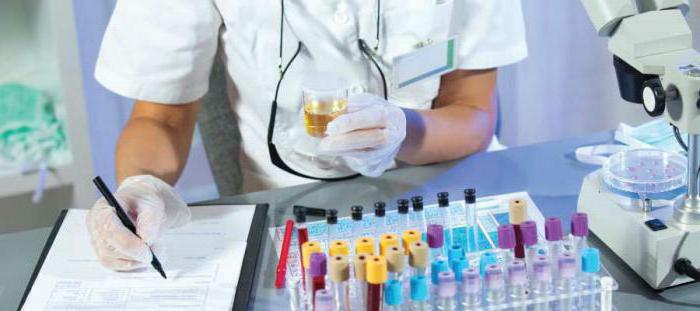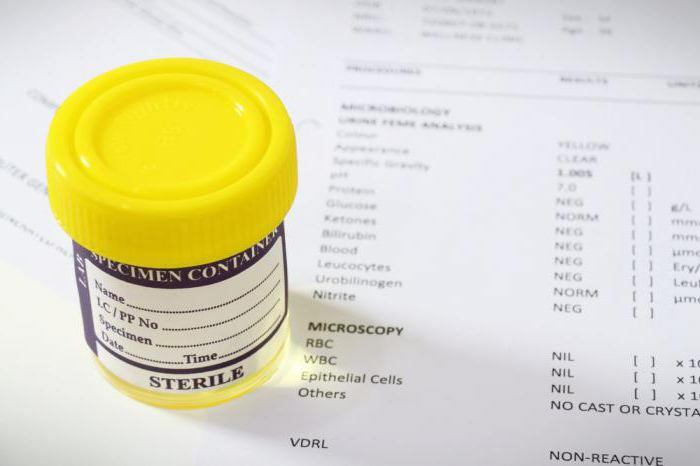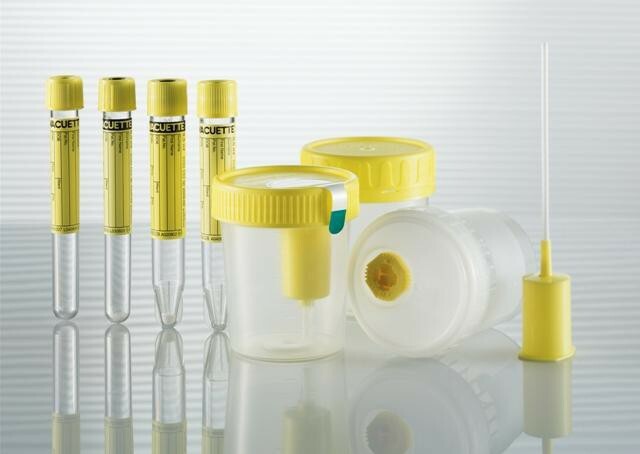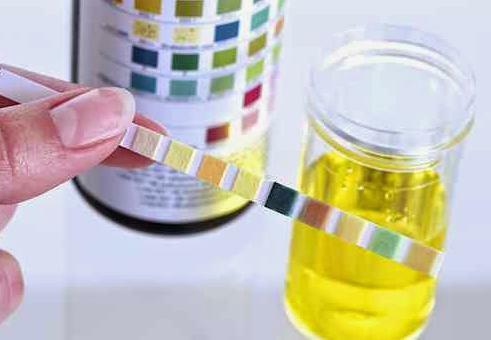Daily urine analysis for protein: how to collect, decrypt the result
Urine is an important biological fluid in the human body. Most of the exchange products are removed with it. In a healthy person, its composition has relatively fixed values. When the disease occurs, some indicators change, which allows the treating doctors to clarify the diagnosis. To identify the problems in the work of the kidneys will help to analyze the daily urine for protein.
Daily urine analysis or diuresis daily
This is a laboratory test that measures the amount of fluid released per day. This method is used to assess the state of kidney function. The composition of the urine:
- water, which is 97%;
- potassium;
- sodium;
- creatinine;
- urea;
- salts in the form of sulfates, phosphates and chlorides.

Each component should normally contain a certain amount, a deviation from which is considered a pathology. In the study of daily urine analysis for protein, the norm for adult men and women is the same. In normal operation of the kidneys, this substance should not enter urine or it may contain a small amount of 40-80 mg. Isolation of 150 mg or more is considered a pathology. However, with age, especially after 60 years, a slight excess of the permissible index is allowed, and this is due to the age-related changes in the body. In some cases, the detection of the protein is due to improper preparation before collection of biomaterial or errors in nutrition. In children, the norm depends on the age, weight and body surface area.
General information
Based on the results of laboratory studies of daily urine, the following information is obtained:
- The volume of fluid that is released during the day from the body. On average, it is 1750 ml and can fluctuate both in the smaller and larger side, depending on the volume of the liquid drunk.
- Sugar. This indicator is especially important for patients suffering from diabetes mellitus.
- Oxalates. Exceeding beyond the permissible limits is fraught with the formation of sand and stones in the kidneys.
- Metanephrine. This substance is formed after the dissolution of hormones. Deviations from the norm in the direction of increase is a sign of pathology of the kidneys, cardiovascular system, etc.
- Protein. In healthy people this indicator should not be observed in urine. This is one of the important parameters, which is revealed in the daily urine analysis. An overestimate level indicates signs of renal pathology, diseases of the central nervous system. In addition to the total amount of protein, a laboratory study of a biological fluid can also detect protein compounds, which are also important for the correct diagnosis.
Indications for the purpose of daily urine analysis for the protein
Because changes in the qualitative and quantitative composition of urine begin earlier than the symptoms of the disease, the analysis allows for the timely detection of pathology. Indications for the appointment of this type of research in adults and children is the presence of the following diseases:
- amyloidosis( impaired protein metabolism);
- of diabetes;
- nephropathy, which is manifested by swelling of the legs;
- ischemia of the heart;
- kidney failure.
 In addition, it is prescribed when the patient takes certain medications: aminoglycosides, ACE inhibitors, thiazide diuretics and some other drugs.
In addition, it is prescribed when the patient takes certain medications: aminoglycosides, ACE inhibitors, thiazide diuretics and some other drugs.
Preparatory stage
For more information and obtaining the most objective information on the results of the analysis of daily urine for protein, you must follow certain rules that are mandatory for fulfillment and are as follows:
- For a day or more, eliminate the use of vitamin complexes, anticoagulants and diuretics.
- Overnight change ration. Refuse from acute, fatty and sweet foods, as well as alcohol and coffee beverages.
- Do not take biomaterial during the period.
- To collect urine, buy a special container in the pharmacy or you can use a glass jar with a volume of at least three liters.
How to assemble daily urine for protein analysis?
Rules for the collection of biomaterial are common for both adult men, and for women and children, who have reached a certain age and can independently use the pot.
- Immediately prior to collection of urine, it is necessary to perform the toilet of the external genitalia.
- The first portion of the biomaterial is not taken into account. However, the time of morning urination is fixed.
- Collect all of the excreted liquid for 24 hours. At night, urine collection is also continuing.
- Packaging with biomaterial is recommended to store at a temperature not higher than 8 degrees and not below 5.
- Immediately after sampling the last portion, the collected urine should be thoroughly mixed.
- Previously, the doctor should clarify how to take a daily urine sample for protein in the laboratory. There are two ways. About 100 ml of biomaterial is cast into a container of small size and taken to the laboratory or it is possible to deliver the entire daily volume in a large container.
- In case, when the diuresis changes per day, the doctor recommends fixing the volume of any consumed liquid within 24 hours.
 How to collect a 24-hour urine sample for protein for children under one year old? This question is of interest to young mothers. When assigning such a study to babies, pediatricians advise to purchase a special device for the collection of biomaterial, which is freely sold in pharmacies. Do not squeeze the liquid out of diapers or catch the moment when the baby wants to urinate.
How to collect a 24-hour urine sample for protein for children under one year old? This question is of interest to young mothers. When assigning such a study to babies, pediatricians advise to purchase a special device for the collection of biomaterial, which is freely sold in pharmacies. Do not squeeze the liquid out of diapers or catch the moment when the baby wants to urinate.
Proteinuria or protein in 24-hour urine
This term indicates high levels of protein substances in urine. It helps to monitor the work of the kidneys. There are proteinuria of the following species. Easy - is not a harbinger of diseases and arises from natural causes. Moderate and pronounced - these species indicate problems in the functioning of the kidneys. In these cases, in addition to protein in the daily urinalysis, there are symptoms such as:
- bone pain;
- dizziness;
- loss of appetite;
- drowsiness;
- nausea;
- vomiting;
- severe fatigue.
Reasons for the appearance of protein in urine:
- heart failure;
- of the central nervous system;
- hyperthyroidism;
- infective endocarditis.
 The change in the composition of urine is indicated by its hue, the appearance of whitish staining is a sign of the presence of albumin, a substance of protein nature.
The change in the composition of urine is indicated by its hue, the appearance of whitish staining is a sign of the presence of albumin, a substance of protein nature.
Types of proteinuria
The main factor influencing the appearance of protein compounds in urine is a malfunction in the assimilation of this substance. There are proteinuria:
- tubular. In some diseases it is impossible or difficult to absorb proteins.
- Flicker. In this case, the protein molecules are not retained and are removed together with the liquid. This phenomenon is typical for the following pathologies: pyelonephritis, damage to the kidneys by toxins, glomerulonephritis.
- Extranrenal. There are injuries of the urinary tract, characteristic of urethritis, colpitis and cystitis.
 To determine the type of proteinuria, its microscopic examination is used. Further, if necessary, the doctor appoints other types of examinations, including ultrasound, magnetic resonance imaging and other hardware methods.
To determine the type of proteinuria, its microscopic examination is used. Further, if necessary, the doctor appoints other types of examinations, including ultrasound, magnetic resonance imaging and other hardware methods.
Protein in urine during pregnancy. Causes of
Protein is a building material that takes part in various processes in the body of an individual. Its detection in urine is considered a sign of the development of pathological processes. Renal corpuscles lose integrity and together with harmful substances urine enters the urine, and the cause of such a malfunction is the inflammatory process in the kidneys. Analysis of urine allows you to recognize the disease in time, make sure the proper functioning of the kidneys in the most crucial and important period in the life of a woman. Any, even the most insignificant detection of protein in pregnant women in a 24-hour urine test is a sign of the onset of pathology. The causes of its appearance are the following diseases:
- glomerulonephritis;
- is lupus erythematosus;
- nephritis;
- hypertension;
- diabetes is a sugar.
 Infectious and inflammatory processes in the kidneys, their mechanical traumas, burns, hypothermia, poisoning with toxic substances or the treatment of malignant neoplasms with chemotherapeutic drugs before pregnancy.
Infectious and inflammatory processes in the kidneys, their mechanical traumas, burns, hypothermia, poisoning with toxic substances or the treatment of malignant neoplasms with chemotherapeutic drugs before pregnancy.
Safe pregnancy
In order to diagnose kidney disease, a simple method is used - a daily urine sample for protein. Observance of the conditions for proper urine collection is mandatory for any woman in the position.
- The external genitalia should be clean. It can be washed using ordinary soap. Use antiseptics or herbal preparations are prohibited, as they will distort the reliability of the results.
- Collect the urine in a clean dry container with a wide throat.
If a protein is found in the urine, the doctor prescribes a treatment that will protect the fetus from the negative effect of the disease that caused the appearance of substances of protein nature in urine. Next, find out the reason for this phenomenon. In most cases, it lies in the violation of the kidneys. The appearance of protein in the biomaterial in the second half of pregnancy is one of the symptoms of gestosis. Then, swelling and blood pressure changes are added.
All women are recommended during pregnancy:
- daily urine analysis for protein;
- regular visit to the doctor;
- pressure monitoring;
- nutrition enhanced by vitamin complexes;
- moderate fluid intake;
- rejection of spices and, if possible, from salt or reduce its quantity to a minimum.
 With a prophylactic purpose, as well as to reduce protein compounds in the urine, a doctor can prescribe herbal remedies or herbal decoctions that have a diuretic effect.
With a prophylactic purpose, as well as to reduce protein compounds in the urine, a doctor can prescribe herbal remedies or herbal decoctions that have a diuretic effect.
Treatment and prevention
The analysis should be entrusted to your doctor. In case of revealing the pathological causes of the appearance of protein substances in urine, the necessary therapy is prescribed only by a medical worker. It is not recommended to be treated independently and to take a great interest in non-traditional methods. When identifying the causes, not related to pathological processes, pay special attention to the diet. It is important to remember that the effectiveness of therapy depends on timely diagnosis.
